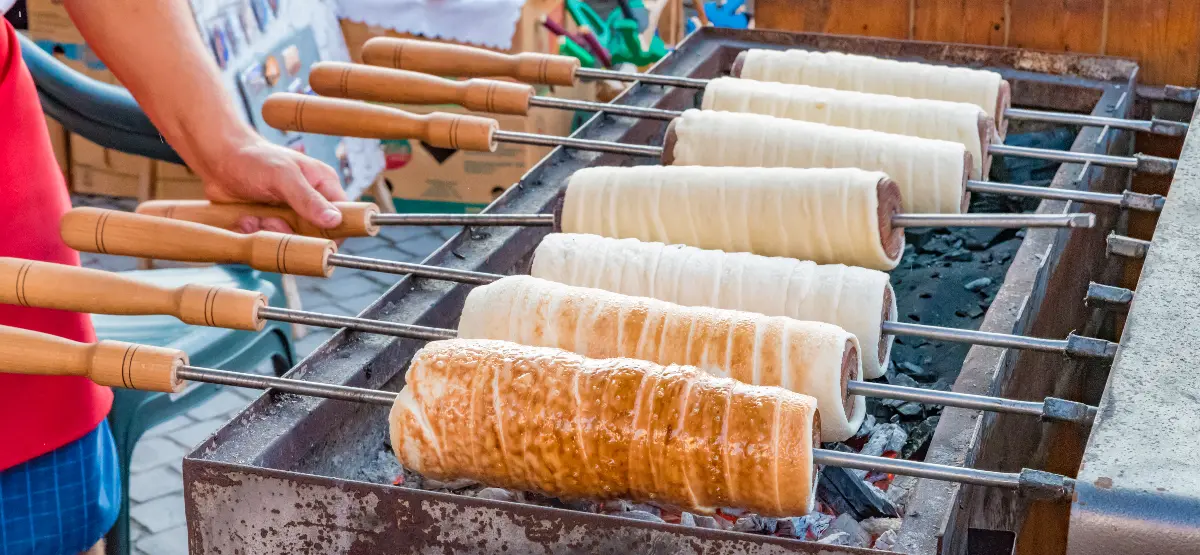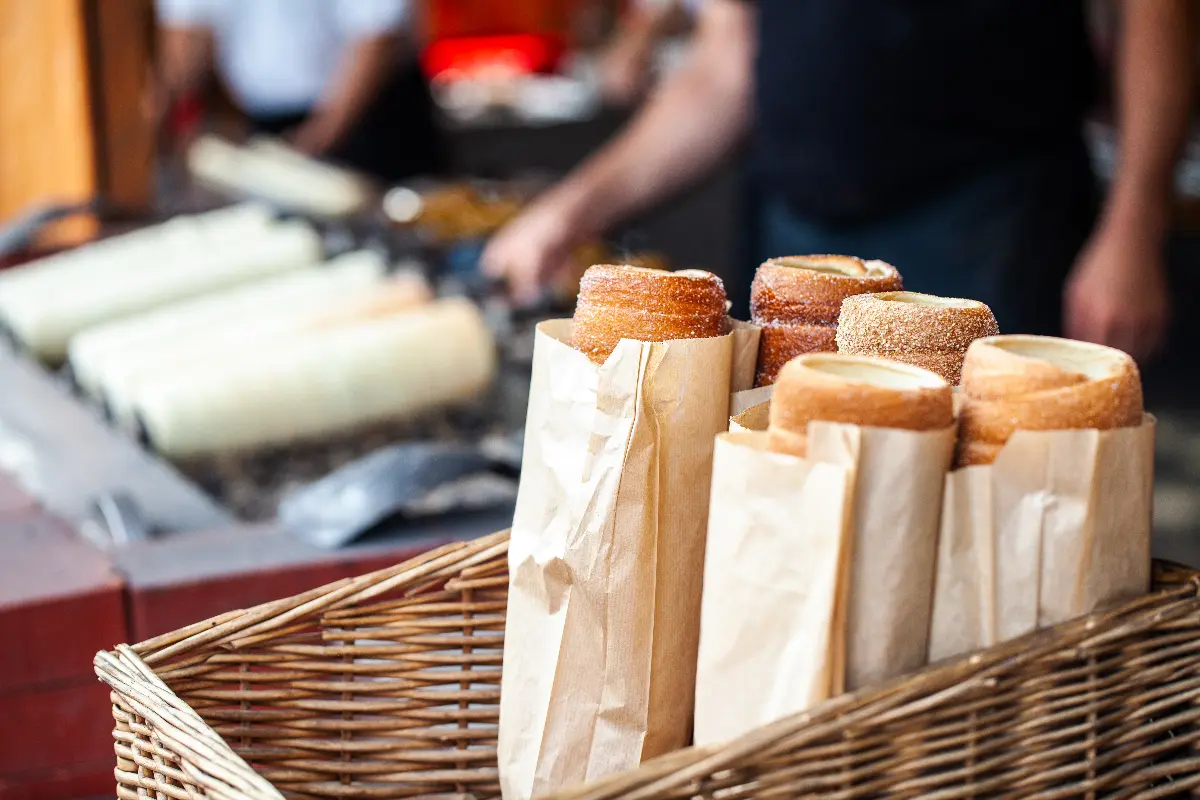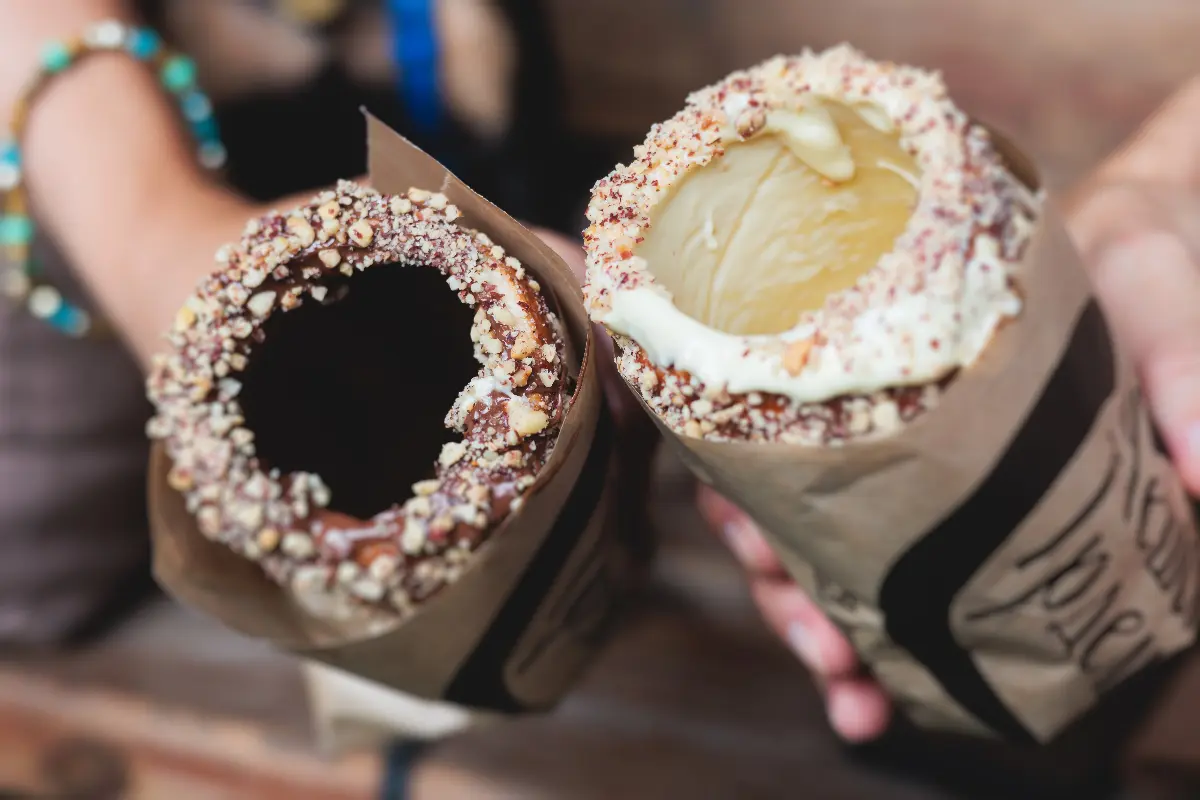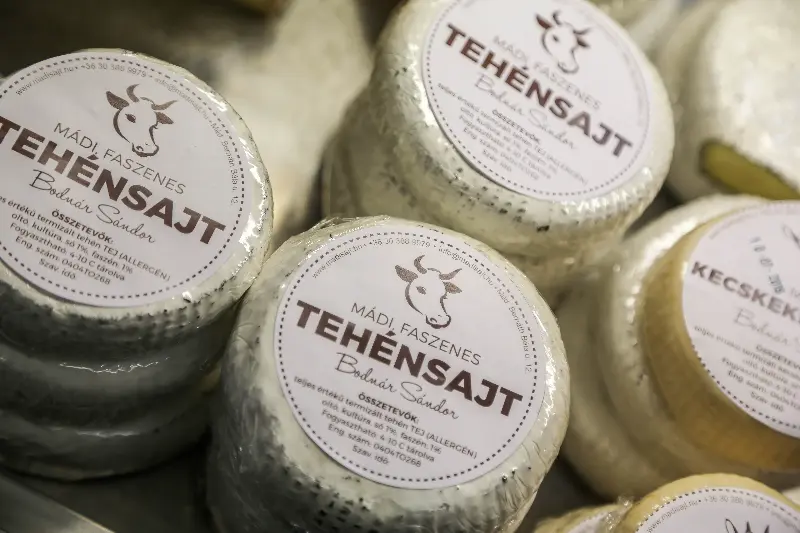
Helyszín címkék:
In search of a hopeful taste and smell: the strange story of chimney cake
Uzonyi Nóra
Chimney and cake: let’s call it chimney cake
In essence, the naming was as simple as that: the Székely-Hungarian-Transylvanian dessert was once made mainly for festive occasions. The name, which we know well, has been around since the mid-20th century, and, of course, it is no coincidence, as the shape of the loaf is eerily similar to the chimney of the old stoves.
Few people know that chimney cakes, even if not by that name, existed long before, only at that time they were called rod doughnut, stick roll or stick doughnut.
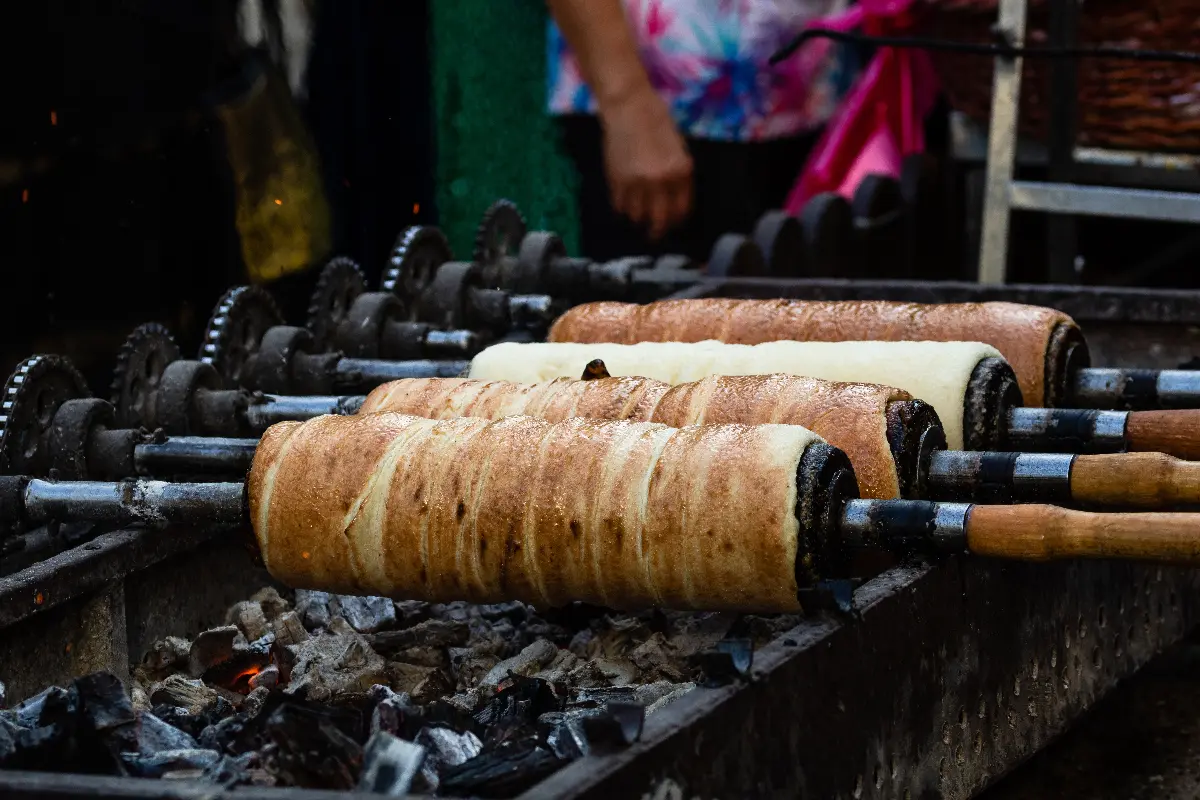
The world’s (presumably) first chimney cake
It is surprising how far back in time you have to go to find out where and when the world’s first chimney cake was made. The location is not Hungary, Székely Land or Transylvania, but Heidelberg, Germany, and the date is 1450 (give or take a few years). The delicacy baked at this time was actually a simple yeast dough, which was meticulously rolled up on a baking rod, greased on the outside with egg yolk and then baked.
A little later, in the 16th century, the basic recipe marched on to the dessert palette with three variations.
The first was the classic chimney cake we still know today, known in the surrounding regions as trdelník from Szakolca (today: Skalica) and in the Czech-Moravian region as trdlo, trdelnice and trdelník.
The second version was made of liquid dough and the third, although also baked over a fire, was a cohesive dough sheet that was probably a little more difficult to eat.
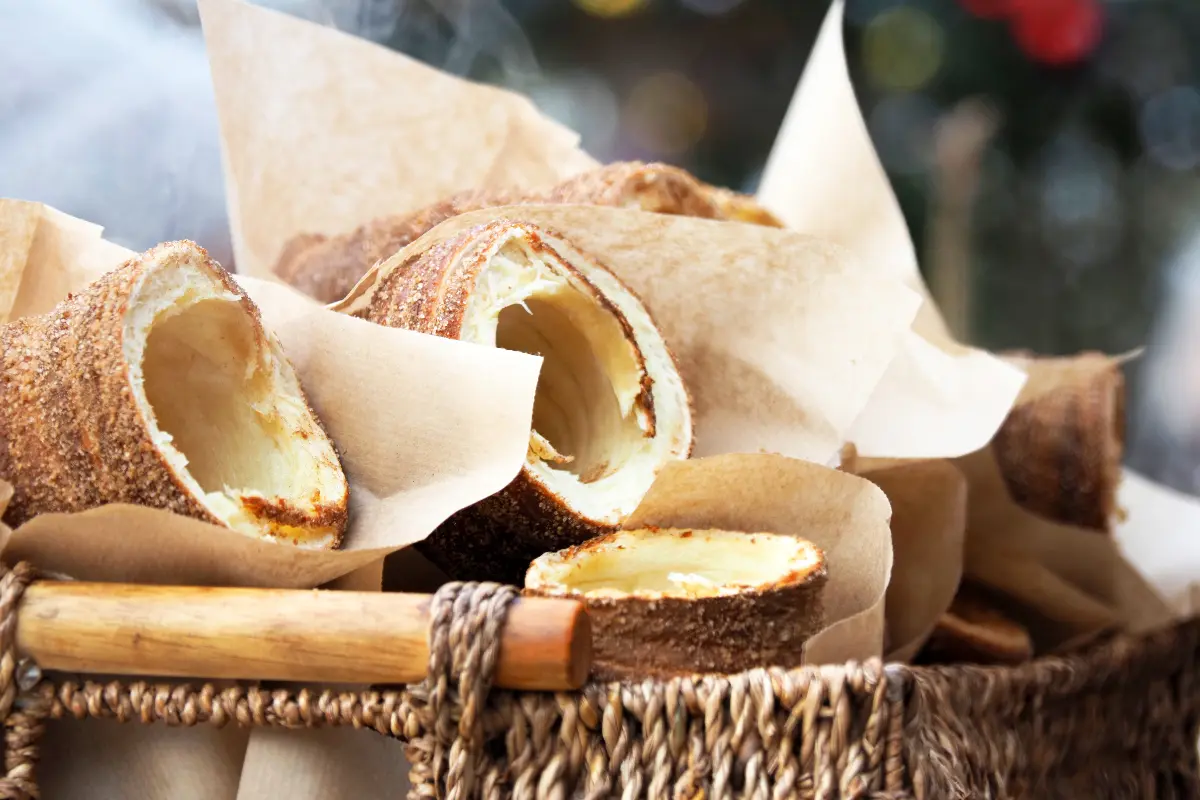
The evolution of the chimney cake: from the first recipe to the flavour splendour
The world’s first official recipe for chimney cake dates back to 1784, and the apron can be found in the cookbook of Count Mária Mikes of Zabola. However, this chimney cake was not the sweet version we know today.
This state of sugarlessness didn’t last long, with the breakthrough of post-baking sweetening just 11 years later, in 1795.
The next major change in the recipe was not until 1876, when the cookbook of Aunt Rézi, a 19th century standard reference, included caramelized icing on the finished chimney cake. This is the layer that gives you that solid, yet delightful little crunch when you bite into the flaky dough. And the next chord in the evolution of the chimney cake was when the still-hot outer sugar coating was subsequently wrapped in chopped walnuts, almonds or even vanilla sugar. Nowadays, in some places, the inside of the chimney cake is filled with fruit, ice cream or pudding, and the imagination is the only limit to what you can sprinkle on it: from liofillicated raspberry pieces to cashew nuts, there are many variations on offer from horn cake bakers, who can often be found at festivals all over the country – and not just in the cold months.
Now that we are all presumably wishing to have a chimney cake at this point, we can tell you that the world’s longest chimney cake to date was baked in Transylvania, using 30 kg of flour: it became 16.7 metres long.

